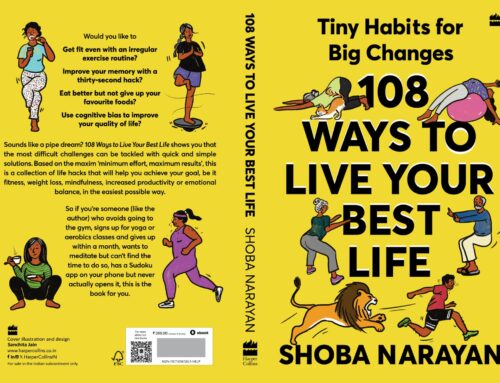The Cows of Bangalore: And How I Came to Own One review: Bovine happiness
The Cows of Bangalore: And How I Came to Own One
Shoba Narayan /Simon & Schuster ₹350
Discovering a bit of old Bangalore in the new
When we were growing up in a spacious green layout in South Bangalore, my mother used to buy fresh milk from a woman who brought two cows to the street corner every morning. Those were the days when everything you needed was at the street corner: the tailor’s shop, the barbershop, the kirana angadi, the bakery with khara buns, and the milk woman with her two cows. We had just relocated from Calcutta, where we had lived in an apartment building. Here, we were in a house with a garden bursting with papery pink bougainvillea. Kids played cricket on the street. Bangalore was only a quiet little town then, but it felt vast and welcoming.
Time passed, the kirana angadi became a mini-mart, life suddenly got busier, and somewhere over the years we moved to packet milk.
The city has grown into a vast metropolis now, but Shoba Narayan discovers a bit of old Bangalore in her neighbourhood. When Narayan’s family relocates from the U.S. to India, they move into an apartment in a building in the old cantonment. Her brother and sister-in-law are in the same complex; her parents live around the corner. “And so we recreate a new avatar of the old Indian joint family: both endearing and aggravating.”
Here, on the street outside, Narayan meets Sarala, a milk woman who sells fresh milk. “Having only drunk pasteurized milk from plastic containers for twenty years, I am nonplussed by the earthy, grassy smell of fresh milk.” Soon she is convinced to buy fresh milk, and thus begins a friendship. The bond is real, filled with humorous remarks and womanly give-and-take. It will lead Narayan to rural Karnataka and Tamil Nadu not only in search of a cow to buy for Sarala, but also in search of her own roots in tradition.
“You can catch the tail of a cow and walk all the way up to the heavens,” says a priest, quoted in the epigraph. Narayan reflects on the ways in which the cow is revered in mythology, and on breeds of cows in Karnataka, India’s second largest milk-producing state.
Her decision to refrain from touching upon the cow politics of today is wise. That is not the story of the cows of Bangalore. At the heart of the memoir is the centrality of the cow in the lives of Sarala and her family. For Sarala, an independent milk woman in a city that has almost entirely moved to plastic packaging, the cow is not only livelihood, but also family member. Similarly, for Narayan, her dog Inji is an equally beloved member of their home. Humans and animals share their lives and depend upon each other in ways that contain contradictions — but also ineffable joys.
The Cows of Bangalore: And How I Came to Own One; Shoba Narayan, Simon & Schuster, ₹350.





Leave A Comment